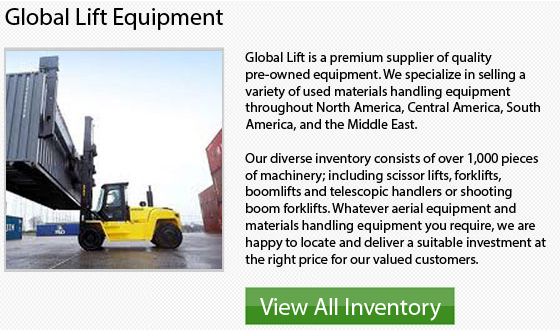
Lift trucks have undergone a major evolution since their launch to the market during the 1920s. These machines are now a lot smarter and stronger. They have revolutionized the material handling arena and have become irreplaceable workhorses in our distribution and warehouse facilities all around the world.
The initial forklifts approximately 100 years ago, began as really simple pieces of motorized equipment which were just capable of moving pallet loads from one place to another. Today, really sophisticated models flood the marketplace. These models are offered in a huge variety of weight capacities, various designs and many lifting heights. Additionally, these types of vehicles are available with different ergonomic designs to enhance operator comfort and numerous new safety features. Keeping the driver as comfy as possible could greatly add to the overall productivity attained during a shift.
Amongst the only remaining universal features which are on the wide range of lift trucks available today are the tires which move the equipment and the forks which are utilized to pick up loads. The basic design and application of different kinds of forklifts used in distribution facilities, warehousing applications and manufacturing facilities is included in this article.
Counterbalanced Lift Trucks
Counterbalanced Lift Trucks comprise: IC or Internal Combustion units, as well as Electric Trucks.
Narrow-Aisle Forklifts
Narrow Aisle Lift Trucks comprise: Reach Trucks, Order Pickers and Turret Trucks.
Low Lift Pallet Jacks or Pallet Trucks
In this category, Electric-Powered Pallet Trucks are included, as are Non-Powered Pallet Trucks.
Counterbalanced Forklift Trucks
The lift truck is the most common kind of forklift. This unit is the counterbalanced, sit-down type. A weight situated in the equipment's rear is responsible for counterbalancing the load's weight. The counterbalance is what prevents the forklift the truck from tipping over.
Typically, a counterbalanced forklift has a lifting height of approximately 16 feet, 189 inches is the most popular. Furthermore, these units can lift a range between 4,000 to 6,500 pounds. Counterbalanced lift trucks come equipped with backup alarms and other safety features like for instance lights.
Approximately 60% percent are electric units and roughly 40% percent are IC units. Each and every type of forklift has a particular place and is suited to accomplish many different jobs. Depending on whether or not you would be using the equipment outside or indoors and what specific types of loads you will be utilizing as well as what type of terrain and surfaces you would be operating on determines the type of forklift that you would select.